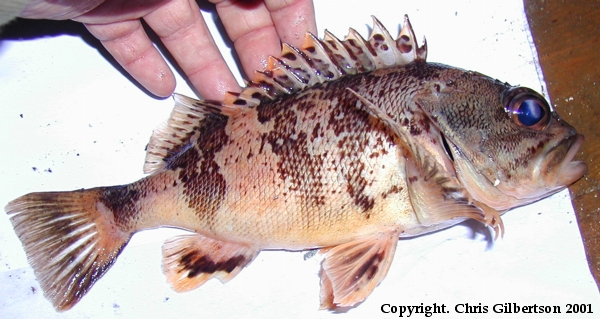
Common Name(s):
Comber
Scientific Name:
Serrannus cabrilla
Usual Size:
UK Record Weights from rod/line:
Shore:
Boat:
MAFF Minimum Size: Shore: Boat:
 |
Fact File:
Common Name(s): Scientific Name: Usual Size: UK Record Weights from rod/line: Boat: MAFF Minimum Size: Shore: Boat: |
| Identification: Typical sea perch profile, although slightly elongated. The head has no bony ridges and the large mouth has a protruding lower jaw. The preoperculum has a fine toothed edge, whilst three flat spines are present at the end of the operculum. The two dorsal fins are fused, with the first dorsal fin being composed of some 11 membrane bound spines, whilst the second dorsal fin is composed of 13 to 15 branched rays. The anal fin has three anterior spines followed by 7 to 9 branched rays. The caudal fin edge is concave in shape. The lateral line has 72 to 78 scales along it’s length. Coloration varies, from the reddish brown of the upper half, with some 7 to 9 dark vertical bands, whilst the body coloration of the lower half is pales to a yellowish white, and the vertical bars fade. The lower part of the head, cheek and operculum have a number of yellowy orange horizontal stripes (with blue face markings), which run the length of the lower body. The fins have light blue spots running in bands across them. Breeding: Habitat: Food: Range: Additional Notes: |
GuestBook / MessageBoards @ http://ukfishid.proboards84.com/index.cgi
Return to the